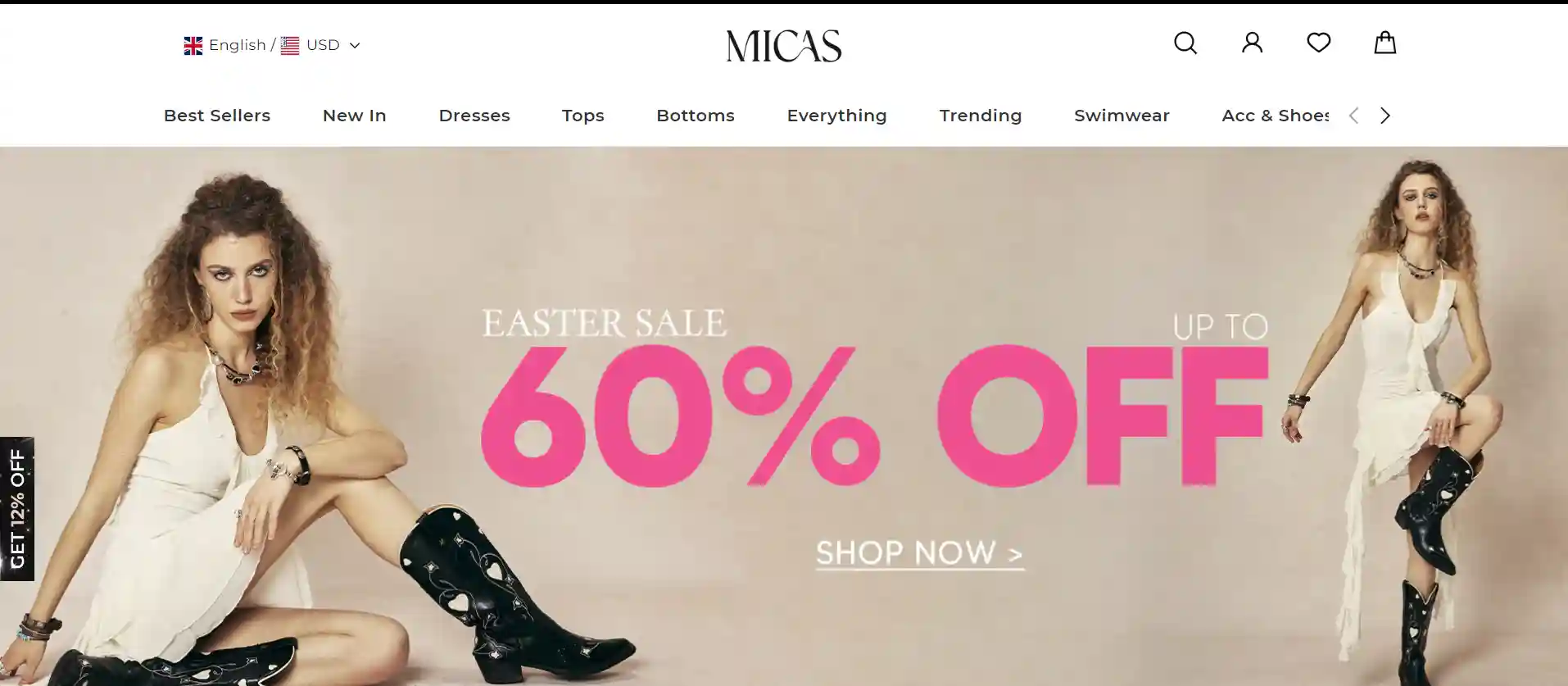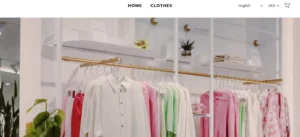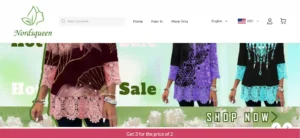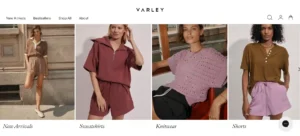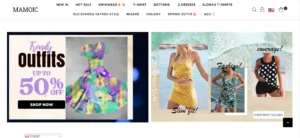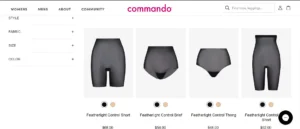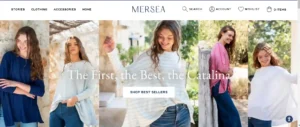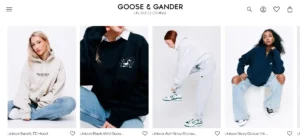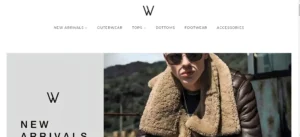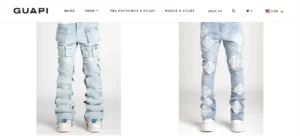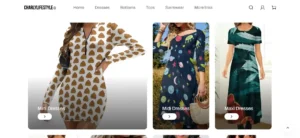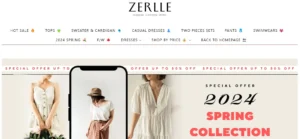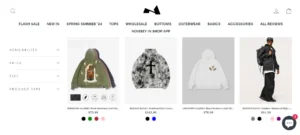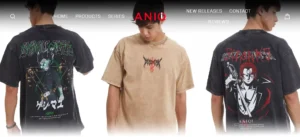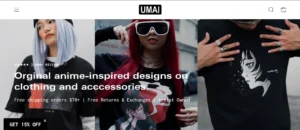Micas Clothes Reviews: Are you in the market for trendy and affordable clothing? If so, you may have come across Micas Clothes in your online shopping endeavors.
But the real question is, are Micas Clothes a legitimate business or just another online scam?
In this blog post, we will delve into the world of Micas Clothes, exploring customer reviews, product quality, pricing strategies, customer service, social media presence, and ultimately determining whether Micas Clothes is a legit business or a scam.
Table of Contents
The Rise of Micas Clothes – An Overview
Micas Clothes has swiftly become a notable name in the online fashion retail space, offering a plethora of stylish and affordable clothing options to a broad audience. The brand distinguishes itself with an expansive selection that promises something for everyone – from everyday casuals to standout pieces for special occasions. As it has woven its way into the fabric of online shopping, the allure of Micas Clothes is not just in the diversity of its offerings but also in its approach to fashion as accessible and universally appealing.
Their journey from a burgeoning online store to a go-to destination for fashion-forward individuals highlights a keen understanding of market demands and consumer desires for quality fashion at competitive prices. Micas Clothes leverages an engaging online platform, coupled with strategic marketing efforts, to showcase their collections and connect with customers on a personal level. Promotional activities and sales are frequently organized to entice new customers and reward loyal ones, fostering a community of fashion enthusiasts who return for the unique blend of style and affordability that Micas Clothes provides.
The brand’s trajectory is marked by its ability to stay attuned to the latest fashion trends while ensuring that its products remain accessible to a wide demographic. This balance between trendiness and affordability is a cornerstone of their business model, inviting scrutiny and admiration in equal measure. As Micas Clothes continues to expand its footprint in the online retail world, its journey reflects the evolving expectations of online shoppers and the dynamic nature of the fashion industry itself.
The Catalog of Controversy – Customer Reviews Unveiled
Navigating the terrain of Micas Clothes’ customer feedback uncovers a landscape riddled with conflicting testimonials. On one end of the spectrum, a cohort of shoppers lavishes praise on the brand, celebrating the intersection of style and affordability that Micas Clothes seems to champion. These satisfied customers herald the company’s offerings as both trendy and economical, pointing to successful purchases that have added value to their wardrobes without draining their wallets. They share stories of delight in discovering fashion finds that mirror the latest runway trends, yet are priced within reach of the average consumer.
However, this glowing endorsement is not without its counter-narratives. A significant portion of the customer base has aired grievances that cast shadows over the radiant reviews. Criticisms largely revolve around the tangible aspects of the clothing received – with fit, fabric quality, and durability taking center stage in the complaints. Disappointed shoppers recount tales of excitement turned sour, where what was envisioned based on online images starkly contrasted with what landed on their doorsteps. The anticipation of a fashion-forward, quality garment often met the reality of ill-fitting pieces crafted from subpar materials, leading to a sense of betrayal and questioning of the brand’s value proposition.
Compounding these product-related disappointments are reports of logistical nightmares, where long shipping delays add insult to injury, further exacerbating customer dissatisfaction. The lack of prompt and effective communication from customer service representatives in resolving these issues has only served to amplify the voices of discontent, weaving a narrative of frustration and doubt around the Micas Clothes brand.
This dichotomy of experiences presents a complex picture, suggesting that while Micas Clothes may offer the allure of trendy, budget-friendly fashion, the reality may fall short for a significant segment of its customer base, leaving a trail of questions regarding consistency and reliability in its wake.
Analyzing the Quality of Micas Clothes
Delving into the quality of Micas Clothes reveals a split in consumer experience that is hard to ignore. The brand, while marketing itself as a purveyor of fashion-forward and accessible clothing, has come under scrutiny for the actual quality of the garments it delivers. Some shoppers express satisfaction, highlighting pieces that meet or exceed their expectations, presenting a picture of a brand that hits the mark on both style and substance. These positive accounts often mention finding trendy items that seem durable enough for their price point, suggesting that Micas Clothes can, in some instances, successfully balance cost-effectiveness with a degree of quality.
However, this perspective isn’t universal. A notable faction of customers provides a contrasting view, voicing concerns over the integrity of the clothing received. Issues cited include materials that feel cheaper than anticipated, garments that wear out or show signs of damage prematurely, and products that deviate significantly from their online representations in terms of fit and finish. Such feedback implies a discrepancy in quality control and highlights a potential inconsistency in the manufacturing process. The disparity between expectation and reality for these customers raises questions about the brand’s commitment to delivering value, casting doubt on the reliability of Micas Clothes as a source for quality wardrobe additions.
The dialogue around the quality of Micas Clothes, therefore, paints a picture of a brand at a crossroads, where the satisfaction derived from its offerings seems almost a matter of luck. For potential shoppers, this inconsistency serves as a reminder of the gamble involved in online shopping, particularly when enticingly low prices are part of the equation.
Pricing Strategy – Too Good to Be True?
Micas Clothes positions itself as a beacon of affordability in the fashion industry, an attribute that attracts a vast audience seeking the latest trends without the hefty price tag. Their competitive pricing strategy is highlighted through regular promotions, deals, and discounts, making it enticing for consumers to frequently visit and shop from their website. The appeal of obtaining fashionable attire at such accessible price points is undeniably strong, promising the thrill of updating one’s wardrobe without financial strain.
However, this affordability raises questions among consumers regarding the true value of Micas Clothes’ offerings. Skepticism arises when the cost of production, considering the price at which these items are sold, is taken into account. This concern is not unfounded, as some customers have reported discrepancies in the quality of the products received, which they attribute to the low pricing model. They ponder whether cutting costs in the production process has led to compromises in the quality of materials and craftsmanship.
Furthermore, the allure of low prices and constant sales could be perceived as a double-edged sword. On one hand, it enables fashion enthusiasts to experiment with new styles without significant financial commitment. On the other, it prompts an inquiry into the sustainability and ethical considerations of such pricing strategies. The implications of fast fashion, fueled by the demand for continuously changing trends at low costs, become a topic of debate among environmentally and socially conscious consumers.
In essence, Micas Clothes’ pricing strategy serves as a key factor in its market appeal, drawing in customers with the promise of affordability. Yet, this same strategy sparks dialogue on the correlation between price, quality, and ethical responsibility, urging consumers to weigh the benefits of cost savings against potential compromises in product integrity and broader ethical concerns.
The Customer Service Experience
Customer service emerges as a critical aspect of any retail operation, with its quality often directly impacting consumer loyalty and brand perception. In the case of Micas Clothes, the realm of customer service has been a source of mixed feedback, highlighting an area that could benefit from substantial improvement. Instances of delayed responses to inquiries and issues have been reported, contributing to a level of frustration among consumers. This delay in communication exacerbates situations where customers seek resolution for orders that have not met their expectations, whether due to quality concerns or delivery complications.
Furthermore, some customers have encountered challenges with the return process, describing it as cumbersome and less than straightforward. This difficulty not only affects the immediate transaction but also influences future purchasing decisions, as consumers may hesitate to engage with a brand that does not offer a seamless return experience. The perception of customer service is further clouded by reports of interactions with representatives who seem insufficiently empowered to offer meaningful solutions, leaving customers feeling undervalued and disregarded.
Amid these criticisms, it becomes evident that enhancing the customer service framework could serve as a significant lever for Micas Clothes to rebuild trust and foster loyalty among its customer base. Investing in training for customer service representatives to ensure they are knowledgeable, empathetic, and equipped to handle inquiries effectively could transform the current narrative. Additionally, streamlining the communication channels to offer more immediate and effective responses would address one of the critical pain points highlighted by customers. As Micas Clothes navigates the complexities of the online retail space, prioritizing a robust customer service experience may be the key to distinguishing itself in a competitive market.
Social Media Presence and Marketing Tactics
Micas Clothes harnesses the power of social media to forge a deep connection with its audience. With a dynamic and visually appealing presence on key platforms, including Instagram and Facebook, they adeptly capture the essence of their brand, engaging a vast community of fashion enthusiasts. Their posts, rich in vibrant imagery and showcasing a diverse range of styles, are designed to resonate with followers, drawing them into the world of Micas Clothes. Regular updates keep the audience informed of the latest trends, promotional offers, and behind-the-scenes glimpses, fostering a sense of inclusion and brand loyalty.
The strategic use of social media by Micas Clothes extends to incorporating customer-generated content, which not only adds authenticity but also encourages a participatory culture among their followers. By featuring real customers donning their purchases, Micas Clothes attempts to bridge the gap between online shopping and tangible experience, providing prospective buyers a more relatable perspective on how their clothing fits and looks in everyday settings.
Despite these efforts to engage and enthrall their audience, concerns have surfaced regarding the veracity of their online persona. Skeptics question whether the polished and enticing social media facade might be overshadowing less favorable aspects of the brand, such as discrepancies in product quality or customer service experiences. This skepticism underscores the importance for brands like Micas Clothes to maintain transparency and authenticity in their online interactions, ensuring that their social media representation is a true reflection of the customer experience and not merely a marketing veneer.
The Final Verdict – Legit or Scam?
In assessing the legitimacy of Micas Clothes, the journey through customer experiences, product quality concerns, and the company’s marketing strategies paints a nuanced picture. The brand undoubtedly attracts a wide audience with its stylish, budget-friendly offerings, and its vibrant social media presence engages a community eager for fashion-forward options. However, the shadow cast by issues related to product inconsistency, customer service frustrations, and the ethical implications of their pricing model cannot be overlooked.
The mixed bag of customer reviews lays the groundwork for a verdict that is far from straightforward. On one side, there are shoppers who celebrate their finds, reveling in the affordability and trendiness that Micas Clothes promises. On the other, a considerable number of consumers express disappointment, pointing to a gap between the online portrayal of products and their real-world counterparts, alongside challenges in resolving concerns with the brand’s support team.
Given this disparity in customer experiences, it’s challenging to label Micas Clothes unequivocally as either a legitimate business or a scam. The truth seems to reside somewhere in the middle, contingent on individual shopping outcomes and expectations. For prospective buyers, the key lies in proceeding with caution—arming themselves with as much information as possible, seeking out a broad range of reviews, and approaching tempting deals with a critical eye. In the volatile world of online retail, informed decision-making is the best tool at a consumer’s disposal. Thus, while Micas Clothes offers the allure of accessible fashion, shoppers should navigate this terrain mindful of the potential for varied outcomes.

